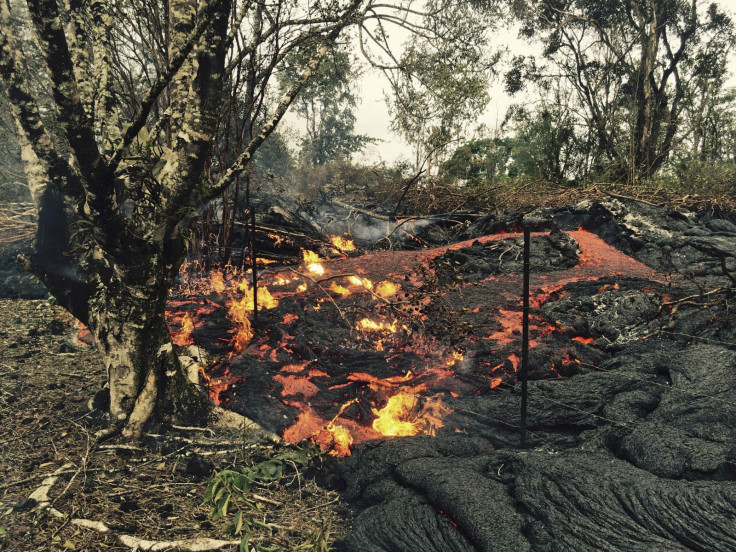Kilauea Volcano: Deaths from 1790 Hawaii Eruption Examined for Clues

As lava from Hawaii's Kilauea Volcano ignites its first house after lava began flowing towards Pahoa in June, scientists have examined the 1790 eruption to find out what killed those living nearby.
Scores of people were killed when the volcano erupted over 300 years ago. It was an explosive eruption resulting from the violent interaction of groundwater with hot rocks.
This type of eruption is common at Kilauea and is expected to happen again when the caldera collapses down to the water table, about 600m below the summit.
Research presented in the GSA Bulletin by scientists at the Hawaiian Volcano Observatory have found that most people were killed by hot, fast moving surges of volcanic debris and steam that would have engulfed the victims.
Footprints made by warriors and their families appear along a trail used at the time – deposits from the surges cover an ash bed indented with these footprints.
Kilauea has two types of eruption – explosive and effusive, researcher D.A. Swanson explained. Explosive eruptions are extremely hazardous and while being brief, are "terrifying".
"Violent explosive eruptions from the summit of Kīlauea are geologically common," the authors said in a statement. "They are generally clustered into periods lasting a few centuries. It has been about 200 years since the most recent major explosion, which culminated about 300 years of frequent explosive eruptions."
In comparison, the current eruption at Kilauea is not explosive and is characterised by a flow of lava that is not very hazardous to life, but can be extremely destructive to property: "Lava flows often last for months or more and are captivating to the viewer.
"In the past 200 years, Kīlauea has produced many lava flows similar to the present one; small explosions took place in 1924 and, on an even smaller scale, during the past six years."
Researchers said the general public is largely unaware of the volcano's explosive nature because it has predominantly produced lava flows over recent years.
"Kīlauea will almost certainly become explosive at some future time, producing conditions similar to those of 1790," researchers said, noting that a period of violent eruptions is unlikely to resume any time soon.
The house that has now been incinerated by Kilauea's lava was abandoned some time ago and no injuries have been reported.
Earlier this week officials said there is no indication the lava flow will stop any time soon.
© Copyright IBTimes 2025. All rights reserved.






















